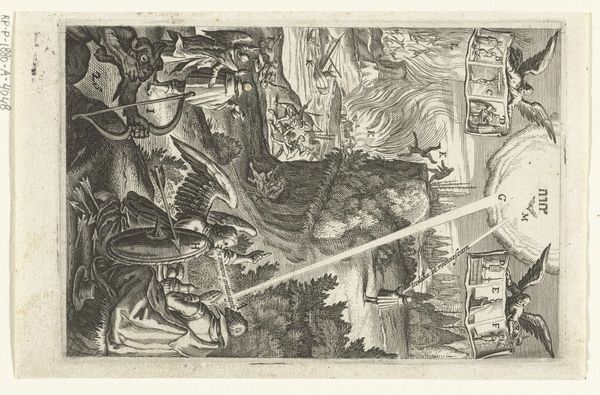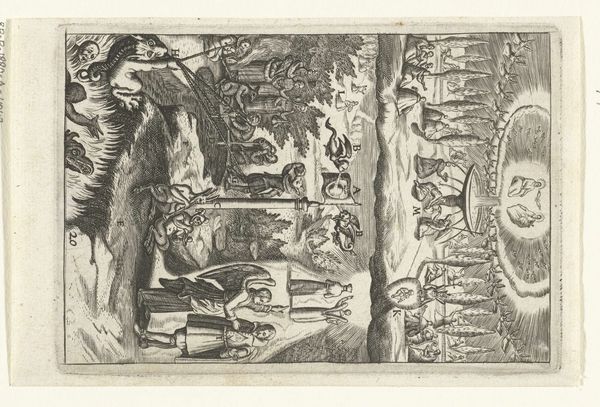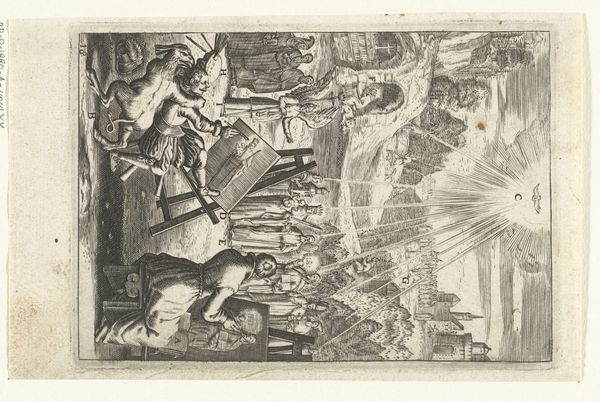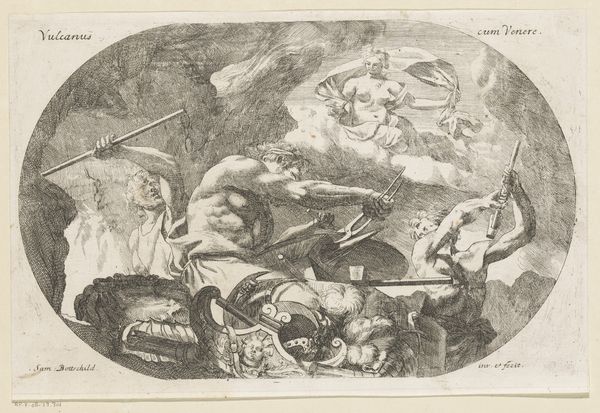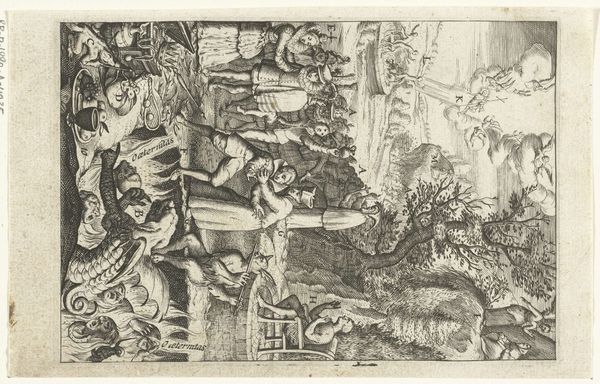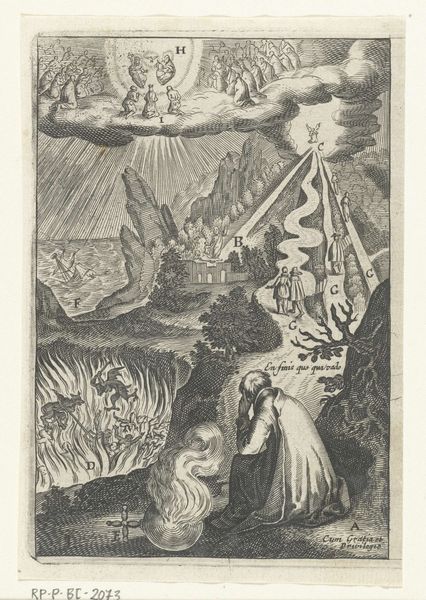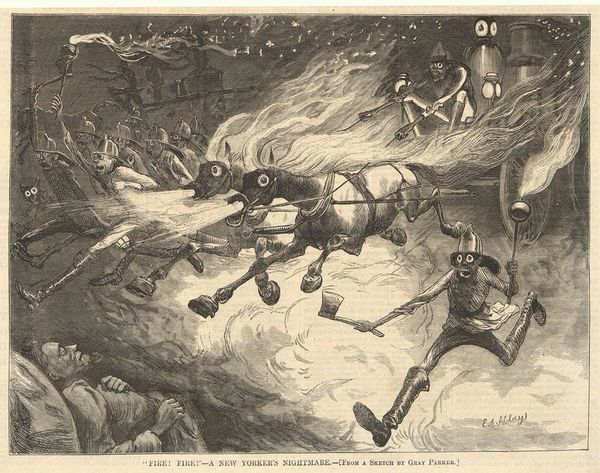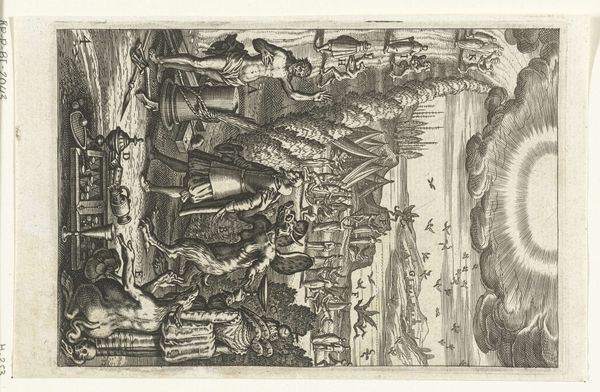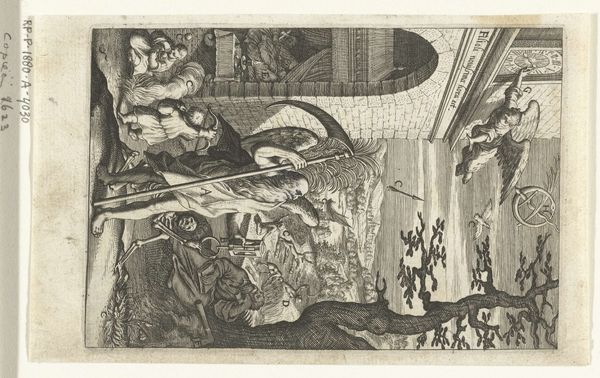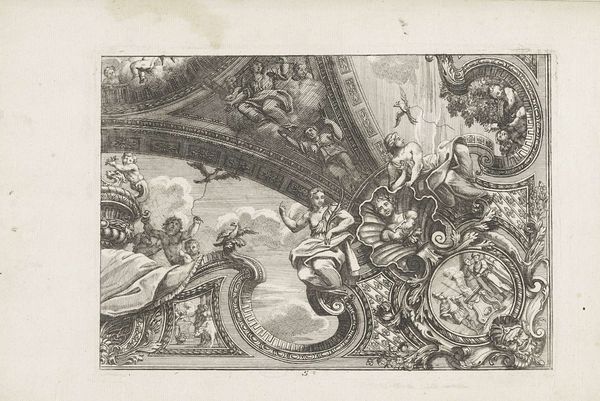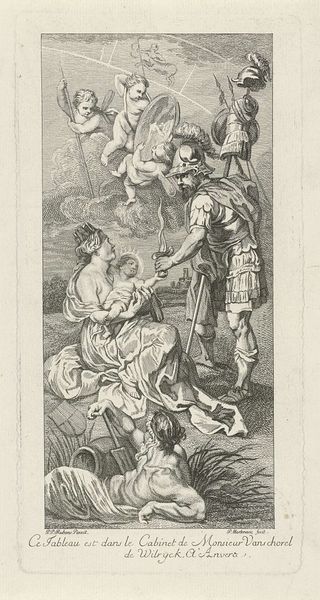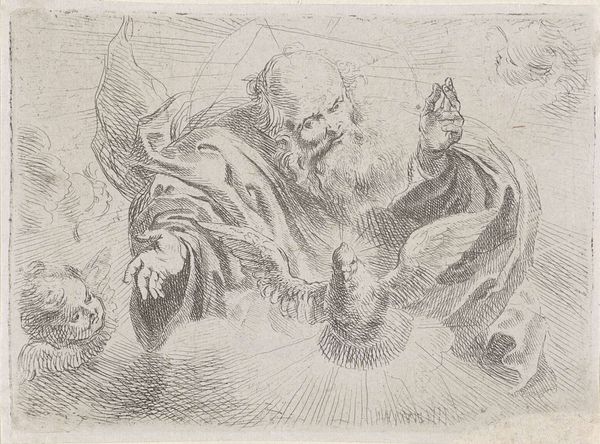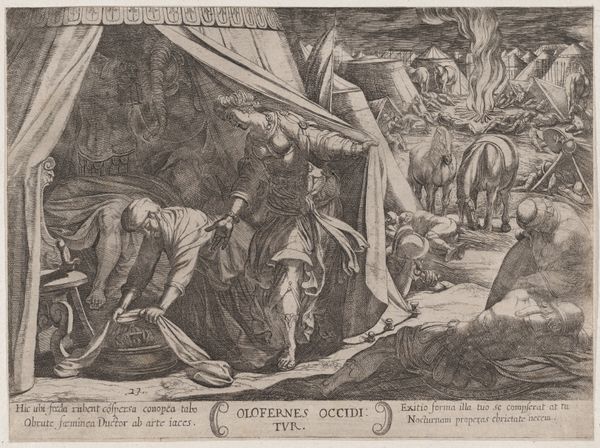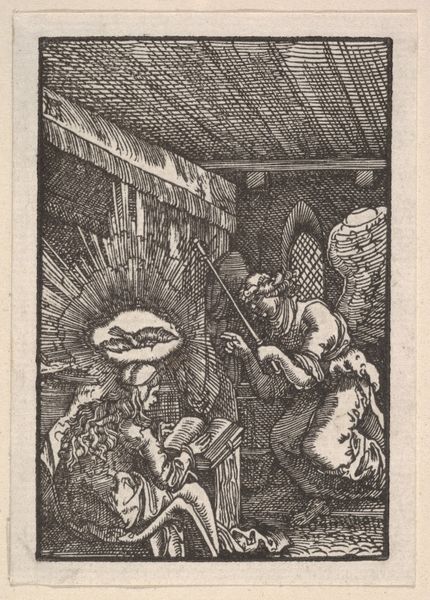
print, engraving
#
baroque
# print
#
pen sketch
#
old engraving style
#
history-painting
#
engraving
Dimensions: height 135 mm, width 75 mm
Copyright: Rijks Museum: Open Domain
Curator: This print, attributed to Boëtius Adamsz. Bolswert and dating from 1590 to 1622, depicts the Nativity. The title, “Geboorte van Christus,” offers a window into its creation during the Baroque period. What strikes you first? Editor: The dramatic contrast! Stark light emanates from the Christ Child, but the rest of the composition feels heavy with shadow, a common Baroque technique. Curator: Indeed. Look at the meticulous engraving technique. The artist uses dense lines to build form and texture, especially noticeable in the rocky grotto and the flowing drapery. Semiotically, the hatching serves to articulate not just shape but moral weight. Editor: And consider the historical context! Printmaking at this time served a vital function. Beyond mere artistry, prints facilitated widespread dissemination of religious narratives, solidifying shared cultural beliefs. Bolswert was really tapping into the demands of this visual economy. Curator: Notice how the composition is divided. The lower left quadrant is given over to the Holy Family, enveloped in divine light, contrasted by the darkness of the rocky structure above and beyond, which leads us towards the text panels printed across the top of the piece. Editor: The text further reinforces this notion. In simple, accessible verses it echoes the themes of light in darkness and emphasizes a divine messenger. Curator: The symbolic language reinforces a sense of hierarchy too; consider the placement of the adoring figures bowing their heads and their backs to the viewer, positioning the observer as also a kind of worshiper. The composition and shading serves this, of course. Editor: Right, but it also normalizes this social order within a recognizable domestic setting, grounding spirituality in everyday life, particularly if this engraving would have been circulated as an object of daily ritual in religious European homes. Curator: It offers a visual sermon of sorts. Editor: Precisely. Beyond its beauty as an object of design, it’s a reflection of a society grappling with power, faith, and artistic representation. Curator: So we find both an example of technical skill and historical purpose embedded within these finely etched lines. Editor: Absolutely, this artwork serves both as a beautiful artifact and a tangible reminder of cultural priorities during that era.
Comments
No comments
Be the first to comment and join the conversation on the ultimate creative platform.
